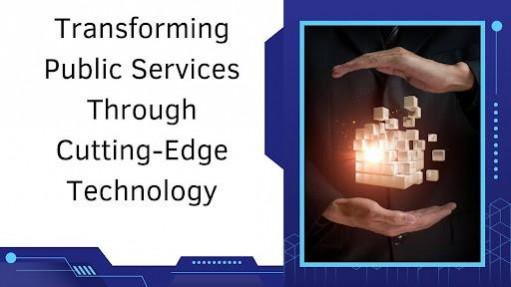Transforming Public Services Through Cutting-Edge Technology

Technological advancements have profoundly transformed the public sector, reshaping governance, enhancing service delivery, and improving citizen engagement. These innovations have not only streamlined operations but also introduced new possibilities for efficiency and transparency. In a recent exploration, SantoshKumar Pulijala provides an in-depth analysis of these developments, tracing their historical milestones, examining current applications, and envisioning their future impact on public administration.
A Historical Arc of Progress
The evolution of technology in governance reflects a journey of remarkable progress, with each era contributing to improved efficiency and accessibility. Early mechanization introduced tools like typewriters, streamlining administrative processes. Mainframe computers later revolutionized data management, followed by the personal computer revolution, which democratized computing and transformed office productivity. The Internet Age further expanded access, enabling digital services and e-government initiatives. In the current Digital Transformation Era, advanced technologies such as AI, blockchain, IoT, and 5G are redefining public sector operations. These innovations enhance decision-making, transparency, and citizen engagement, marking a pivotal shift toward smarter, more responsive governance.
Current Trends Driving Change
Modern governance is undergoing a transformation through the integration of cutting-edge technologies to tackle complex challenges and improve service delivery. Digital governance strategies are at the forefront, with governments developing comprehensive frameworks to automate operations and enhance citizen satisfaction. These strategies foster streamlined services and bolster public trust. Cloud migration plays a crucial role by offering scalable and flexible platforms that reduce costs and improve operational efficiency. This shift facilitates seamless inter-agency collaboration and enables data-driven decision-making. Additionally, citizen-centric services are elevating public engagement through intuitive, user-friendly digital platforms, which simplify processes and increase satisfaction levels. In parallel, cybersecurity measures have become essential, addressing vulnerabilities in critical infrastructure. Robust security frameworks are minimizing risks, ensuring safe and reliable digital public services amidst rising concerns of cyber threats in an increasingly interconnected world.
Core Technologies Revolutionizing the Public Sector
Emerging technologies are reshaping public sector operations, offering transformative solutions for enhanced efficiency and service delivery. Artificial Intelligence (AI) is revolutionizing decision-making by employing predictive analytics and chatbots to improve citizen engagement, though challenges such as data quality and ethical oversight remain pivotal. Blockchain is securing digital transactions with unmatched transparency while streamlining processes like procurement and land registry management, ensuring efficiency and trust. The Internet of Things (IoT) is at the heart of smart city initiatives, optimizing resource use, reducing environmental impacts, and modernizing urban infrastructure. 5G networks are unlocking real-time services, significantly improving emergency response, public safety, and access to remote healthcare. Concurrently, cloud computing is fostering collaboration through multi-cloud strategies and advanced tools, driving resilience and productivity, ultimately transforming public administration into a more agile, transparent, and citizen-centric model.
Challenges in Implementation
Integrating technology into the public sector, while transformative, is fraught with challenges. Legacy system modernization poses a significant barrier, with outdated infrastructures often unable to support innovative technologies. Data privacy and security concerns demand robust frameworks to safeguard sensitive information and maintain public trust. Skill gaps in the workforce and constrained budgets further hinder progress, emphasizing the need for targeted investments and strong public-private partnerships to ensure effective adoption and long-term sustainability.
The Road Ahead
The future of public sector technology relies on advancements like quantum computing and AI-driven solutions. Predictive governance, blockchain transparency, and IoT infrastructure promise greater efficiency and inclusivity. However, sustainable progress demands addressing ethical challenges and societal impacts, ensuring technology adoption is aligned with principles of public trust, equity, and responsible governance.
In conclusion, SantoshKumar Pulijala‘s insightful analysis underscores the potential of technology to build a more effective, transparent, and citizen-focused public sector. By navigating challenges and embracing innovation, governments worldwide can pave the way for a transformative digital future.
